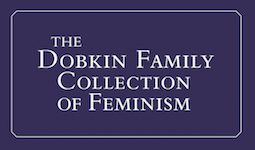LETTERS: 50 letters signed to Stantial and others.
50 Letters Signed
by Alice Stone Blackwell
Blackwell, Alice Stone. Suffrage Correspondence. 1880-1949.
52 Letters signed, mostly autograph but a few typed, primarily to Edna Stantial, secondarily to Kitty Barry, others to Anna Child Bird, Maud Wood Park, Henry Browne Blackwell, Florence Blackwood Mayhew, Sara Algeo, and Dr. Hagopian, September 14, 1880 - April 26, 1949. Also present are four signed holiday postcards.
Blackwell belonged to a family of eminent activists which included her mother, Lucy Stone, her aunts, Doctors Elizabeth and Emily Stone, and Antoinette Brown Blackwell; and her father, Henry Browne Blackwell, himself a tireless suffragist. She served as editor of The Woman’s Journal, the most important women’s rights newspaper in the country, for thirty-five years. Blackwell also held a number of important posts in both the N.A.W.S.A. as well as the Massachusetts Woman Suffrage Association, including that of President. The collection of materials below pertains to these roles as well as several others she played in a lifetime of committed activism (NAW I, pp. 156-58).
In addition to the highlights below, the letters contain updates on health, travel plans, and family news. Other material present includes a 12 line manuscript poem titled “Easter Greetings;” a handwritten notice, “My beach is private, and all trespassing is forbidden;” two pages of handwritten quotations related to woman suffrage;” and a holiday greeting card.
Highlights:
Four ALS, to Anna Child Bird, May 26 – June 11, 1918, eight leaves, 15 pages, folding creases, rust from paperclip. Written following a heated election within the Massachusetts Woman Suffrage Association which resulted in Mrs. Charles Sumner Bird, the wife of a conservative U.S. Senator, being installed as chair of the Executive Board, these letters pertain to discussions on significant points of policy and strategy in the final push for woman suffrage.
In the first letter, Blackwell, having opposed Bird in the election, diplomatically offers her support: “Accept my congratulations on your election. Although I supported Mrs. Pinkham, I believe it is better for the cause, on the whole, that you were chosen.” Then, in an eight page letter which followed on May 28, Blackwell lays out, point by point, the strategy the MWSA has been asked to pursue by Catherine Chapman Catt at the N.A.W.S.A. (“Mrs. Catt has greatly strengthened the suffrage work throughout the country by unifying it,” she writes, referring to Catt’s “Winning Plan,” discussed above.) The points include holding “250 public meetings...to protest against the delay in passing the Federal Amendment;” getting up “a huge suffrage petition, signed by at least 266,000 women;” obtaining headquarters near the State House; and identifying and working against candidates for state office who oppose woman suffrage. In the next letter, dated June 2, and marked “Confidential,” Blackwell writes to express her stringent opposition to appointing Mrs. Fitzgerald to the chair of the Organization Work Committee, explaining that
when she worked for the Association before...she was very able, very pleasing, but also completely unscrupulous . . . If she becomes Organization Chairman...she will be able completely to dominate the Association at the next annual meeting...I am a sure of this as I can be of anything.
In the final letter to Bird, Blackwell assess two candidates for executive secretary, and again expresses opposition to Mrs. Fitzgerald, this time for the position of vice president, on the grounds that she “has publicly campaigned for Wilson and the Democratic party,” and as the MWSA “has always striven to keep itself nonpartisan.”
TLS, to “District Leader,” May 29, 1919, two leaves of MWSA letterhead, folding creases, slightly browned at edges. The letter opens with a paragraph by Anna Tillinghast, chair of the Legislative Committee, writing that she has misunderstood “our policy towar
Print Inquire

